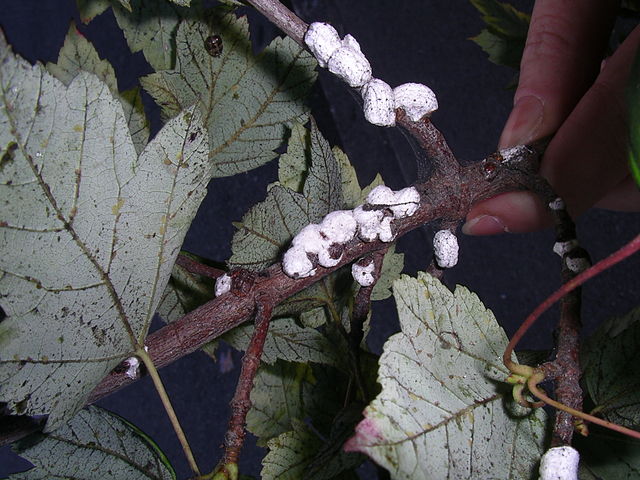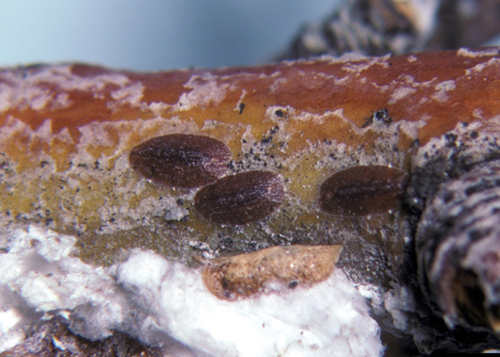Integrated Pest Management
Cottony Maple Scale

Cottony maple scale egg sacs. (Inzilbeth, Wikipedia)

Cottony maple scale adults. (Raymond gill, Cal. dept. of ag and food, bugwood.org)
HOSTS
- Maples
- Alder
- Hackberry
- Dogwood
- Hawthorn
- Apple
- Sycamore
- Poplar
- Oak
- Willow
DESCRIPTION
These scales become most visible when they produce their cottony white egg sac in early summer. feed on plant sap from leaves (nymphs) and twigs and small branches (adults). Large outbreaks are generally only seen on stressed or weakened trees. Immature crawlers in the mobile stage are tiny (3/64”), yellow-orange and without wings. The crawler stage occurs from mid-June to early August in northern Utah.
BIOLOGY
The most noticeable stage are the white, cottony egg sacs grow from under overwintering female scales and hatch June through July. The crawlers settle on the undersides of leaves near the midrib or veins. The males emerge in late summer and mate with immature females who then migrate to twigs and branches to overwinter.
SYMPTOMS
- Heavy infestations cover twigs and branches with white, cottony masses
- Branch and twig dieback; early leaf drop
- Honeydew production leading to sooty mold on leaves and branches
GENERAL MANAGEMENT
Keeping trees healthy and stress free is the best way to prevent scale infestations. Monitoring host trees for scale populations allows for early detection and eradication of scales
Insecticides
- Apply a dormant horticultural oil to twigs and branches.
- Apply a residual insecticide when crawlers are present (monitor).
- Apply imidacloprid in spring after leaves have expanded.

